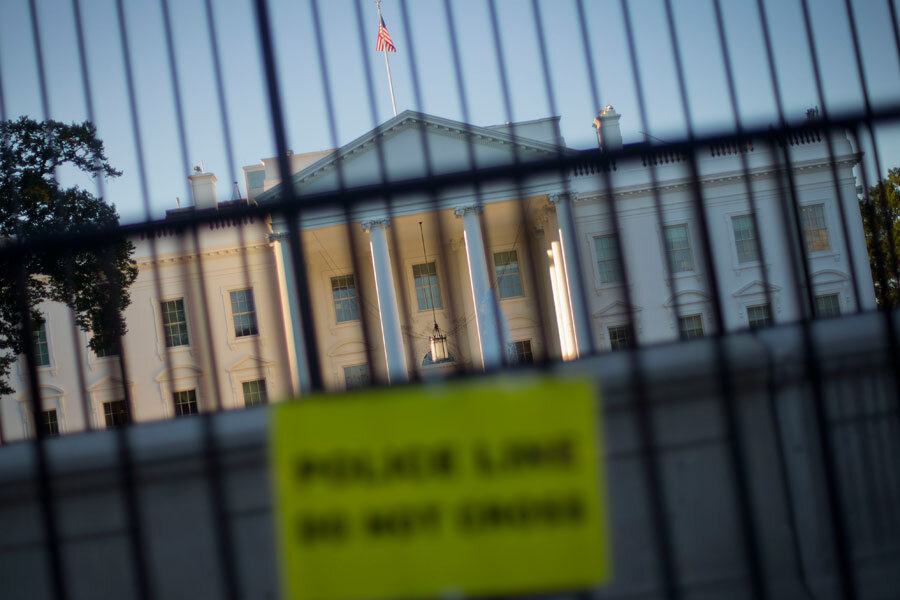White House fence jumper may have gotten deep in building. Consequences?
Loading...
| Washington
White House fence jumper Omar Gonzalez made it much farther into the White House itself than the Secret Service has admitted, according to an account in The Washington Post.
According to the Post’s Carol Leonnig, Mr. Gonzalez was not caught inside the front door, as previously described. Sprinting, the fence-jumper ran right by the guard inside the entrance. He then made it into the East Room, a long, ceremonial space.
He reached the end of that room, at the door to the Green Room, before he was tackled by an agent, according to officials who spoke to Ms. Leonnig. That means he was fairly close to the South Lawn itself. If he’d reached that – which he didn’t – he’d have made it all the way through the building.
One reason Gonzalez may have made it as far as he did was that an alarm box at the front door meant to serve as an early warning system had been muted at the request of the ushers’ office, according to the Post.
If true, these details put the intrusion into another level of seriousness. Gonzalez was armed with a small knife. He may have been in a position to have harmed some official present in the executive mansion, if not the president or his family, who weren’t there at the time.
These details are emerging on the eve of a Tuesday hearing into the matter in front of the House Oversight and Government Reform Committee, at which Secret Service director Julia Pierson will likely be grilled about the incident. That may be no coincidence – leaking potentially damaging information just before a big hearing is a time-honored method of putting witnesses on the defensive.
That said, the Post’s account is based on anonymous sources, and there may be more (or less) to the story than they are saying.
It’s quite possible somebody will lose their job if this new account is the correct one. That’s not just because of the incident itself. Intentionally misrepresenting the incursion would be a highly serious matter, if that’s what happened.
That hasn’t stopped lots of folks from joking about it on social media, however. Par for the course was Democratic political consultant Paul Begala.
Then there was Washington Examiner contributing editor David Freddoso, who added: “In fact, it appears the fence-jumper actually signed three bills into law before the Secret Service caught up.”






